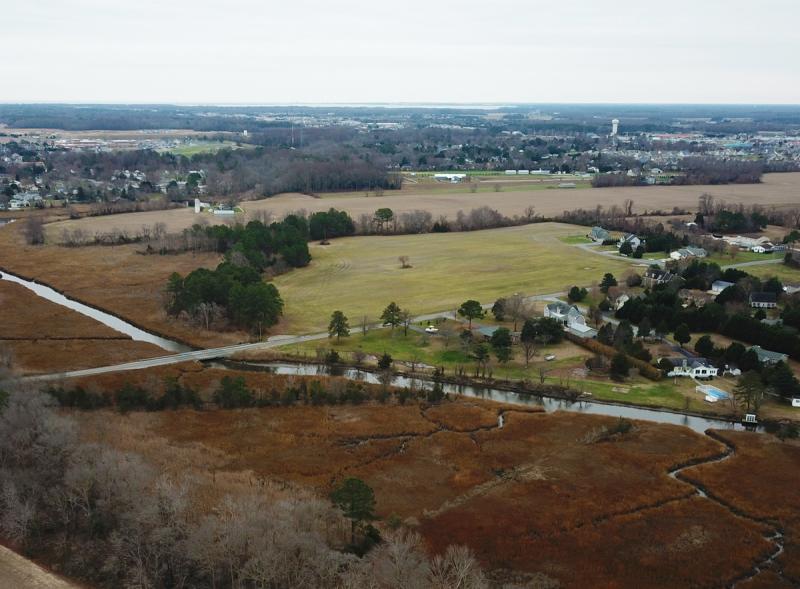Lewes residents say annexation ordinance needs teeth
Lewes residents were loud and clear at a June 18 public hearing: Developers should not include wetlands when determining the number of units permitted on a tract.
The annexation regulation ad hoc committee recommended the city mirror Sussex County, which decided tidal wetlands should not be counted when calculating maximum number of permitted units. Lewes residents say Lewes needs to go further and remove all wetlands.
“We should lead, not follow,” said resident Marta Nammack. “We are where the water flows. We are at greater risk.”
Nammack said the city should maximize open space and preserve as much natural vegetation as possible to protect city resources, whether natural or tourism-based.
Many residents also said the city needs to change townhouses from a permitted use to conditional use.
Resident Doug Spelman said the future of New Road is in jeopardy if the city continues to allow townhouses by right in annexation zones. He urged council to move it to conditional use.
“To give the planning commission that authority would be huge,” he said. “They can step back and take a look. The code, as proposed, will alter Lewes forever. It just flat out will.”
Resident Debra Evalds said allowing townhouses as a permitted use could come back to haunt the city in small pockets surrounded by city land that have never annexed into Lewes, such as the end of Hornkill Avenue.
“It would really be terrible to see those low-density neighborhoods convert over to high density,” she said. “It would be prudent to address that in the writing of this ordinance.”
On a macro level, Evalds said, townhouses are a bad option for Lewes.
“The density is just too dense,” she said. “It’s cheapening Lewes, and it’s giving away too much. Some of the uses being granted by this ordinance are still conditional use if they are in the county. We should be able to give the planning commission the teeth to make decisions they feel are right. Not send things over that are stacked in favor of the developer.”
Deputy Mayor Fred Beaufait chaired the annexation committee, which was charged with tweaking the two annexation zoning districts. The committee met 10 times beginning in February, taking issues one by one to develop recommendations.
The group also discussed open space and buffers. Realizing a parcel with a high percentage of wetlands could result in a development plan with little to no useable open space, the group recommended that at least 30 percent of the total open space has to be contiguous and usable for residents of the community.
Beaufait said the committee realized it overlooked buffers along state roads when it developed the ordinance, so it recommended a 75-foot buffer from the edge of the right of way of a state road. Where a development is being built next to another community, the committee recommends a 30-foot buffer. Within that buffer, the developer must plant trees and shrubs build a mound at least 4 feet high or construct a fence or wall with landscaping on either side.
The ordinance also calls for a 25-foot buffer from nontidal wetlands and a 50-foot buffer from tidal wetlands. Resident Maryann Ennis said those buffers need to be increased, pushing for the distances to be increased to 50- and 100-feet, respectively.
“Delaware is the lowest-lying state,” she said. “We are in a threatened area.”
Planning commission member Sumner Crosby said buffer width is arbitrary because it depends on the contour of the landscape. He said the city needs to implement something much more sophisticated, especially for the lands near Canary Creek and the Great Marsh.
“In the face of sea level rise, it’s about how the water moves across the landscape as it rises,” he said. “We need to do some sort of analysis to see what it would look like. The vertical differences is what matters in terms of how far we need to move things.”
Beaufait said he heard a lot of misinformation in the comments June 18, but also several good suggestions council should consider. Council will review the public comments and vote on the ordinance and potential changes at a future meeting.
Nick Roth is the news editor. He has been with the Cape Gazette since 2012, previously covering town beats in Milton and Lewes. In addition to serving on the editorial board and handling page layout, Nick is responsible for the weekly Delaware History in Photographs feature and enjoys writing stories about the Cape Region’s history. Prior to the Cape Gazette, Nick worked for the Delmarva Media Group, including the Delaware Wave, Delaware Coast Press and Salisbury Daily Times. He also contributed to The News Journal. Originally from Boyertown, Pa., Nick attended Shippensburg University in central Pennsylvania, graduating in 2007 with a bachelor’s degree in journalism. He’s won several MDDC awards during his career for both writing and photography. In his free time, he enjoys golfing, going to the beach with his family and cheering for Philadelphia sports teams.






















































